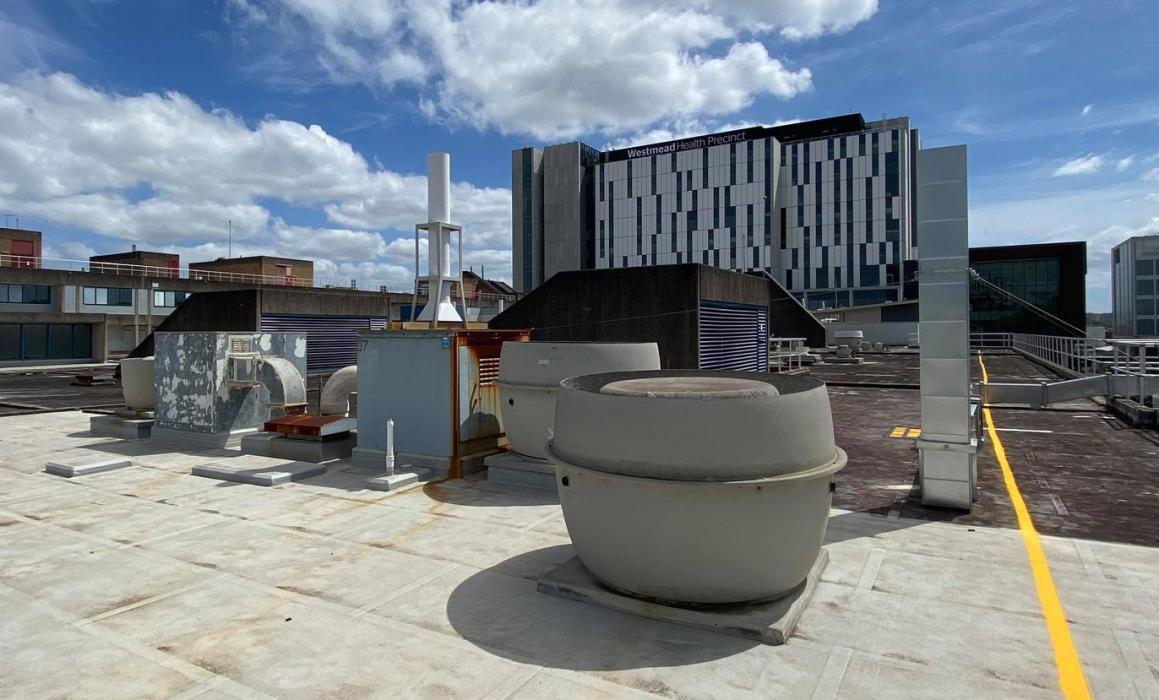The importance of acoustics

One of the key considerations of any new project are the acoustics. They can have a major impact on a number of factors, including human health and wellbeing, performance, communication and privacy.
Northrop recently completed two healthcare projects that, while similar in some respects, had some very different acoustic challenges – the solutions to which needed to comply with NSW Health Engineering Services Guidelines.
Westmead Hospital: Balancing multiple requirements with care
Northrop worked with Westmead Hospital on the $200m redevelopment project to update and future-proof the facility. The project included an internal refurbishment of clinical areas within one of the existing buildings, which dated back to the ’70s.
Within this particular building, you’ll find the respiratory and cystic fibrosis ward, operating theatres, dermatology and ambulatory care. Add to that a new rooftop plant room and you can begin to appreciate the acoustic challenges that lay ahead of the team.
Working with Health Infrastructure to a very tight timeframe, the scope of work was to create a compliant acoustical environment, review the operating theatre’s new plant room, and provide a development application report and advice for compliance with council and the NSW Environmental Protection Authority (EPA).
The key acoustic aspects of the project were:
- Ensure adequate acoustic insulation performance of the walls for speech privacy
- Review the mechanical design and provide advice for noise control to the habitable areas and the impact of the outdoor mechanical equipment upon the adjacent hospital spaces and residential buildings
- Design of acoustic parameters such as isolation of various spaces against transmission of noise and vibration or reverberation control in habitable areas
Understanding acoustic absorption
Acoustic absorption for reverberation control and duct insulation presented a challenge, given these materials are usually porous and prone to contamination, so an additional thin polyester lining was suggested to cover the porous duct insulation.
Hospital-grade ceiling tile products were used in most areas for reverberation control. They couldn’t however be used in pressurised areas such as the negative pressure isolation rooms in the cystic fibrosis ward, because ceiling grids are difficult to seal completely (this is needed to maintain the required pressure).
For spaces such as operating theatres, where a positive pressure is required, the voids and interstices of the absorption surface may be clogged by ingress of dust and grit particles, resulting in the loss of absorption values and creating a non-hygienic media.
As a solution, Northrop suggested the addition of a thin layer of polythene sheet over the absorptive surface to maintain the hygiene and absorptive properties.
Manly Hospital: Ensuring privacy and comfort for people who need it most
This project at Manly Hospital saw the demolition an existing building to create a new adolescent and young adult hospice. The hospice accommodates patients in a less clinical environment, and includes a kitchen, dining, games room, activities rooms, offices, meeting rooms, multi-faith rooms and some clinical areas, in addition to providing some family accommodation.
The key acoustic aspects of the project were:
- Ensure acoustic insulation performance of the walls for speech privacy
- Review the mechanical designs and provide advice for noise control to the habitable areas, and the impact of the outdoor units upon the accommodation rooms
- Reverberation control to habitable areas
- Recommendations for the façade design to achieve minimum acoustic insulation performance
- Recommendations for impact isolation of the upper floors to attenuate footfall noise to the ground floor habitable areas
- Provide a noise impact assessment for the Review of Environmental Factors, assessing the operational and construction noise impacts at the nearest residences for compliance with acoustic requirements of the council and EPA
Putting users at the centre
At Manly Hospital, the emphasis was on user experience and creating a more resort-style environment while still incorporating clinical areas.
The people who will be using the facility were at the centre of the focus at all times; Northrop worked closely with the architect and user groups to get a thorough understanding of this.
From an acoustic perspective, the mechanical services requirements were much less onerous than Westmead, meaning far fewer challenges with acoustic treatment to heating, ventilation and air-conditioning systems to achieve the required internal noise levels.
Ensuring acoustic privacy in the patient rooms, staff offices and meeting rooms was of paramount importance – the ability to have confidential conversations is critical in any healthcare facility, particularly one like this.
The client also wanted to ensure a superior level of quality across the project. For example, ensuring the emergency generator didn’t create a noise impact upon the internal spaces, patients and residents, and acoustic wall insulation above and beyond the requirements of Health Engineering Services Guidelines.
Hitting the right notes
Working closely with the architect and the client is imperative to achieving the desired outcome on any aspect of the project, and acoustics is no different.
The very best outcomes are achieved when there is a thorough understanding of the needs of the project’s end users – and, to this end, good communication is paramount. Throughout the project at Manly, Northrop translated technical information into accessible language to aid in the process of presenting to the user groups every week. Although this meant there was some extra time and thought required, it was a very rewarding process to hear from the people who are going to be using the building every day – and the outcome met, if not exceeded, the expectation of the client.
For more information on our acoustic services, please view our capability statement here.
